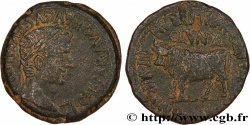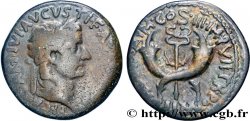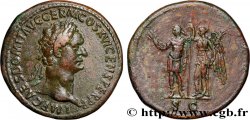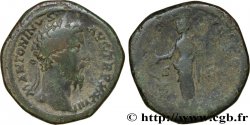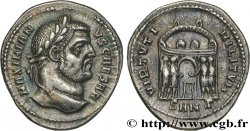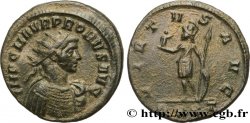brm_231606 - TIBERIUS Denier
Not available.
Item sold on our e-shop (2019)
Price : 790.00 €
Item sold on our e-shop (2019)
Price : 790.00 €
Type : Denier
Date: c. 22-30
Mint name / Town : Lyon
Metal : silver
Millesimal fineness : 900 ‰
Diameter : 18,5 mm
Orientation dies : 3 h.
Weight : 3,52 g.
Rarity : R1
Coments on the condition:
Exemplaire de qualité exceptionnelle pour ce type de denier sur un petit flan bien centré avec les grènetis visibles. Portrait de toute beauté de haut relief. Revers de toute beauté où tous les détails sont visibles et servi par une magnifique patine de médaillier avec des reflets grisâtres et mordorés
Catalogue references :
Predigree :
Cet exemplaire provient de MONNAIES 43, n° 369
Obverse
Obverse legend : TI CAESAR DIVI - AVG F AVGVSTVS.
Obverse description : Tête laurée de Tibère à droite (O*).
Obverse translation : “Tiberius Cæsar Divi Augusti Filius Augustus”, (Tibère César fils du divin Auguste, auguste).
Reverse
Reverse legend : PONTIF - MAXIM.
Reverse description : Pax (la Paix) ou Livie assise à droite sur un siège décoré, le pieds reposant sur un tabouret, tenant une branche d'olivier de la main gauche et de la main droite, un sceptre bouleté.
Reverse translation : “Pontifex Maximus”, (Grand pontife).
Commentary
Rubans de type 3. Comme pour le denier d'Auguste, cette pièce appartient à l'atelier impérial de Lyon et ce type de denier a circulé pendant pratiquement un siècle. Il se rencontre très souvent avec des monnaies gauloises de la phase terminale dans les fouilles archéologiques. C’est la monnaie romaine la plus courante en Gaule pour les Julio-Claudiens. La quatrième émission se caractérise par un socle représenté par une ligne et les pieds du siège sont ornementés au revers ; au droit, les rubans de la couronne sont divergents.
Ribbons of type 3. As with the denarius of Augustus, this coin belongs to the imperial mint of Lyon and this type of denarius circulated for almost a century. It is very often found with Gallic coins from the final phase in archaeological excavations. It is the most common Roman coin in Gaul for the Julio-Claudians. The fourth issue is characterized by a base represented by a line and the feet of the seat are ornamented on the reverse; on the obverse, the ribbons of the crown are divergent
Ribbons of type 3. As with the denarius of Augustus, this coin belongs to the imperial mint of Lyon and this type of denarius circulated for almost a century. It is very often found with Gallic coins from the final phase in archaeological excavations. It is the most common Roman coin in Gaul for the Julio-Claudians. The fourth issue is characterized by a base represented by a line and the feet of the seat are ornamented on the reverse; on the obverse, the ribbons of the crown are divergent








 Report a mistake
Report a mistake Print the page
Print the page Share my selection
Share my selection Ask a question
Ask a question Consign / sell
Consign / sell
 Full data
Full data


